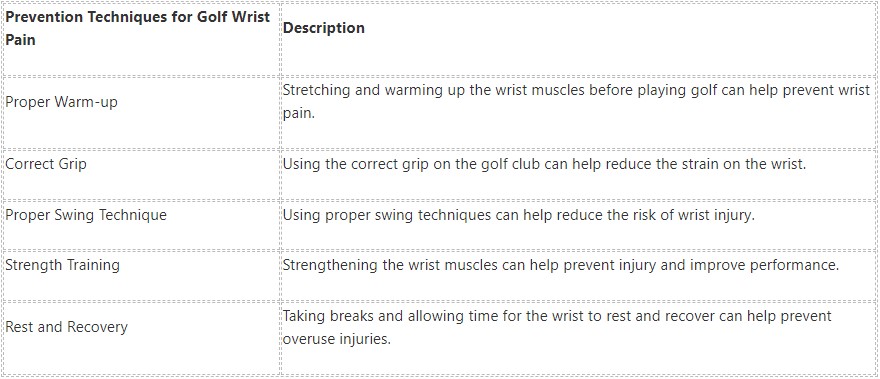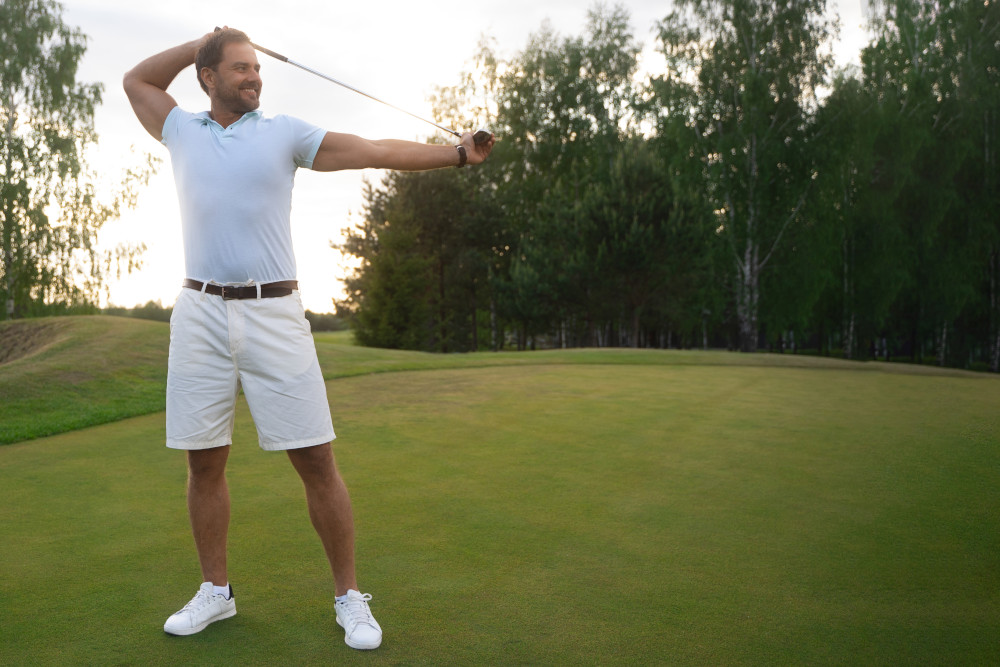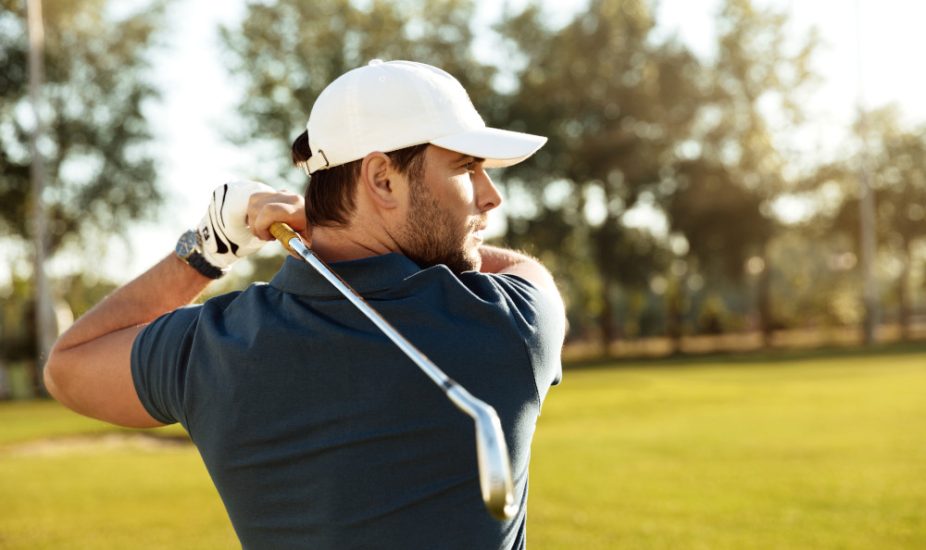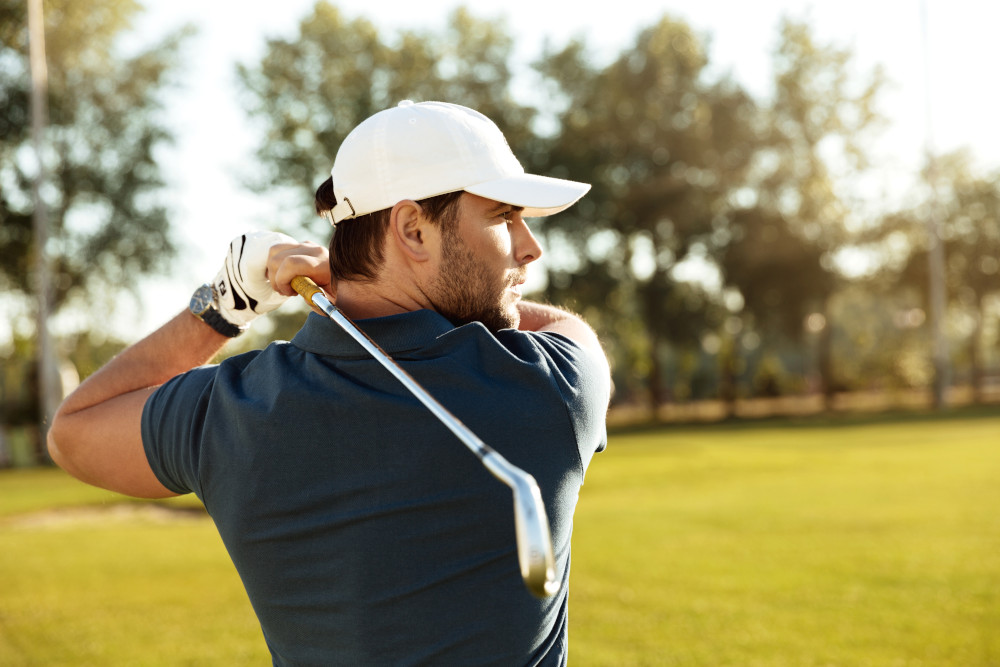Golf can also take a toll on your body, particularly your wrists. Golf wrist pain is a common issue among golfers and can significantly impact your game. In this article, we will explore the anatomy of the wrist in golf, common injuries that cause golf wrist pain, and prevention techniques to avoid such injuries. We will also delve into proper warm-up and stretching exercises, golf-specific strengthening exercises for the wrist, and rest and recovery techniques to alleviate wrist pain. We will discuss golf equipment and accessories that can help mitigate wrist pain and provide tips for improving your golf game while dealing with wrist pain. Whether you’re a seasoned golfer or just starting, this article will provide valuable insights on how to manage golf wrist pain and enhance your overall performance on the course.
Golf wrist pain is a common ailment among golfers of all skill levels. It refers to any discomfort or pain felt in the wrist during or after playing golf. This pain can range from mild to severe and can greatly impact a golfer’s ability to play the game.
There are several common causes of golf wrist pain, including overuse, poor technique, and underlying medical conditions. Overuse injuries occur when the wrist is subjected to repetitive motions, such as swinging a golf club, without proper rest and recovery. Poor technique, such as gripping the club too tightly or using improper form, can also contribute to wrist pain. Underlying medical conditions such as arthritis or tendonitis can cause or exacerbate wrist pain in golfers.
The symptoms of wrist pain in this sport can vary depending on the severity of the injury. Common symptoms include pain, swelling, stiffness, and a decreased range of motion in the wrist. Some golfers may also experience a clicking or popping sensation in the wrist during movement. If left untreated, golf wrist pain can worsen over time and potentially lead to more serious injuries.
Key Takeaways
- Golf wrist pain can be caused by a variety of factors, including overuse, poor technique, and underlying medical conditions.
- Understanding the anatomy of the wrist in golf can help golfers identify potential sources of pain and prevent injury.
- Common injuries that cause golf wrist pain include tendonitis, sprains, and fractures.
- Prevention techniques for golf wrist pain include proper technique, equipment selection, and conditioning exercises.
- Proper warm-up and stretching exercises, golf-specific strengthening exercises, and rest and recovery techniques can all help alleviate golf wrist pain.
Understanding the Anatomy of the Wrist in Golf
To understand why golf wrist pain occurs, it is important to have a basic understanding of the anatomy of the wrist and its role in the golf swing. The wrist is a complex joint that consists of eight small bones called carpal bones. These bones are connected by ligaments and tendons, which allow for movement and stability.
In the golf swing, the wrists generate power and control. During the backswing, the wrists hinge and cock to create torque and store energy. As the downswing begins, the wrists release this stored energy, allowing for maximum clubhead speed at impact.
The different parts of the wrist work together to facilitate this movement. The radius bone in the forearm connects to the carpal bones in the wrist, allowing for rotation and movement. The ulna bone, which runs parallel to the radius, provides stability and support. The tendons and ligaments in the wrist help to connect the bones and provide additional support during movement.
Common Injuries That Cause Golf Wrist Pain
Several common injuries can cause golf wrist pain. One of the most common is tendonitis, which is inflammation of the tendons in the wrist. Tendonitis can occur when the tendons are overused or subjected to repetitive stress. Symptoms of tendonitis include pain, swelling, and a decreased range of motion in the wrist.
Another common injury is a sprained wrist, which occurs when the ligaments in the wrist are stretched or torn. This can happen when a golfer takes a hard swing or lands awkwardly after a shot. Symptoms of a sprained wrist include pain, swelling, and difficulty moving the wrist.
Golfers may also experience carpal tunnel syndrome, which is caused by compression of the median nerve in the wrist. This can occur when the tendons in the wrist become inflamed and put pressure on the nerve. Symptoms of carpal tunnel syndrome include pain, numbness, and tingling in the hand and fingers.
Prevention Techniques

Preventing golf wrist pain starts with proper technique and form. It is important to use a relaxed grip on the club and avoid gripping too tightly. This will help to reduce strain on the wrists and prevent overuse injuries.
It is important to warm up before playing golf to prepare the muscles and joints for activity. This can include gentle stretching exercises for the wrists and forearms, as well as light cardiovascular exercises to increase blood flow.
Proper equipment can also help prevent golf wrist pain. Choosing clubs with appropriate shaft flex and grip size can reduce strain on the wrists. Using a golf glove can provide additional support and cushioning for the wrists.
Proper Warm-Up and Stretching Exercises for Golfers
Warming up and stretching before playing golf helps prevent wrist pain and injury. This helps to increase blood flow to the muscles and joints, improve flexibility, and reduce the risk of strain or sprain.
One effective warm-up exercise for the wrists is wrist circles. To perform this exercise, extend your arms in front of you with your palms facing down. Slowly rotate your wrists in a circular motion, first clockwise and then counterclockwise. Repeat this exercise 10 times in each direction.
Another beneficial stretching exercise is wrist flexion and extension. Start by extending your arm in front of you with your palm facing up. Use your other hand to gently pull back on your fingers, stretching the wrist. Hold this stretch for 15-30 seconds, then switch to the other hand.
Golf-Specific Strengthening Exercises for the Wrist
In addition to warming up and stretching, incorporating golf-specific strengthening exercises into your routine can help prevent wrist pain. These exercises target the muscles and tendons used during the golf swing, improving strength and stability.
One effective exercise is wrist curls. Start by sitting on a bench or chair with a dumbbell in one hand. Rest your forearm on your thigh with your palm facing up. Slowly curl the weight towards your body, then lower it back down. Repeat this exercise 10-15 times on each side.
Another beneficial exercise is wrist extensions. Start in the same position as the wrist curls, but with your palm facing down. Slowly extend your wrist upwards, then lower it back down. Repeat this exercise 10-15 times on each side.
Rest and Recovery Techniques for Golf Wrist Pain
Rest and recovery prevent and treat golf wrist pain. It is important to listen to your body and take breaks when needed. If you start to feel pain or discomfort in your wrist, stop playing and rest until the pain subsides.
Applying ice to the affected area can help reduce inflammation and relieve pain. Wrap an ice pack or a bag of frozen peas in a towel and apply it to the wrist for 15-20 minutes at a time. Repeat this process every 2-3 hours as needed.
Elevating the wrist can also help reduce swelling and promote healing. Prop your wrist up on a pillow or cushion whenever possible to keep it elevated above your heart.

Golf Equipment and Accessories That Can Help Alleviate Wrist Pain
Several golf equipment and accessories can help alleviate wrist pain and provide additional support during play. One option is a wrist brace or support, which can help stabilize the wrist and reduce strain on the tendons and ligaments. These braces are typically made of neoprene or elastic material and can be worn during play or periods of rest and recovery.
Another option is using a larger grip on your golf clubs. This can help reduce strain on the wrists by allowing for a more relaxed grip. There are several different grip sizes available, so it may be helpful to try out different options to find the one that works best for you.
Using a golf glove can provide additional support and cushioning for the wrists. Look for a glove with extra padding in the palm area to help absorb shock during impact.
Tips for Improving Your Golf Game While Dealing with Wrist Pain
Dealing with wrist pain doesn’t mean you have to give up on improving your golf game. There are several modifications you can make to accommodate your injury and continue working towards your goals.
One option is to focus on short game practice. This can include putting, chipping, and pitching, which put less strain on the wrists compared to full swings. By honing your skills in these areas, you can still improve your game while giving your wrists a break.
Another option is to work with a golf instructor or physical therapist or occupational therapist who can help you modify your swing to reduce strain on the wrists. They can guide on grip, posture, and swing mechanics that can help alleviate pain and prevent further injury.
When to Seek Medical Attention
While many cases of golf wrist pain can be treated with rest and self-care, there are times when it is necessary to seek medical attention. If your wrist pain is severe, persistent, or accompanied by other symptoms such as swelling, redness, or difficulty moving the wrist, it is important to consult a healthcare professional.
A doctor or orthopedic specialist can perform a thorough evaluation of your wrist and recommend appropriate treatment options. This may include physical therapy, occupationatl therapy, medication, or in some cases, surgery.
It is important to address wrist pain promptly to prevent further damage and ensure a full recovery. By seeking medical attention when needed, you can get back on the golf course and enjoy the game you love without pain or discomfort. Your first step toward healing and feeling better is to schedule an appointment for a professional evaluation. Schedule an appointment today – complete and submit the request form by the link: https://sportscare-armworks.com/request-an-appointment/. Choose the preferred service and location in the Portland area. If you contact us after business hours, we will get back to you the next business day. We look forward to hearing from you!
Don't let pain or limited mobility hold you back.
Contact us now to schedule your appointment and regain strength through personalized physical therapy sessions. Take charge of your health and well-being today!
Request An AppointmentFrequently Asked Questions
-
What is golf wrist pain?
Golf wrist pain is a common condition that affects golfers. It is characterized by pain, discomfort, and stiffness in the wrist joint, which can make it difficult to grip and swing a golf club.
-
What causes it?
Golf wrist pain can be caused by a variety of factors, including overuse, poor swing mechanics, improper grip, and underlying medical conditions such as arthritis.
-
What are the symptoms?
Symptoms of golf wrist pain may include pain, tenderness, swelling, stiffness, and weakness in the wrist joint. These symptoms may be mild or severe and can affect one or both wrists.
-
How is it diagnosed?
Golf wrist pain is typically diagnosed through a physical examination and a review of the patient’s medical history. Imaging tests such as X-rays, MRI, or CT scans may also be used to help diagnose the condition.
-
What are the treatment options?
Treatment options for golf wrist pain may include rest, ice, compression, and elevation (RICE), physical therapy, anti-inflammatory medications, corticosteroid injections, and surgery in severe cases.
-
Can golf wrist pain be prevented?
Golf wrist pain can be prevented by using proper swing mechanics, maintaining a proper grip on the club, warming up before playing, and taking breaks to rest and stretch during play. It is also important to maintain good overall physical fitness and to avoid overuse of the wrist joint.


